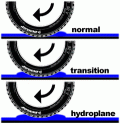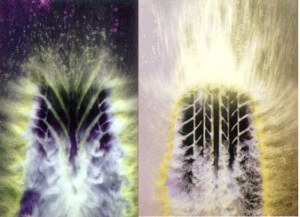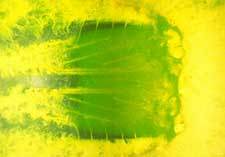For full subject and images refer to www.scientificmarket.biz
Car history
Car essential component
Modern car technology
Car safety systems
Car capability (Load, speed, off-road, durability…)
Intelligent / computerized car systems
Car selection
This document lead us to understand the main parts of a car without entering in details (except following the references or the links)
Car history
The history of the automobile begins as early as 1769, with the creation of steam engined automobiles capable of human transport.[1] In 1806, the first cars powered by an internal combustion engine running on fuel gas appeared, which led to the introduction in 1885 of the ubiquitous modern gasoline- or petrol-fueled internal combustion engine.
The year 1886 is regarded the year of birth of the modern automobile – with the Benz Patent-Motorwagen, by German inventor Carl Benz.
Cars powered by electric power briefly appeared at the turn of the 20th century, but largely disappeared from use until the turn of the 21st century. The early history of the automobile can be divided into a number of eras, based on the prevalent means of propulsion.
Reference and for further reading: http://en.wikipedia.org/wiki/History_of_cars
Car essential component
Car body
Car motor
Car motion transmission / differential
Car Chock absorber system / suspension system
Exhaust system
Car body
The car body is designed to protect the passenger inside, reduce aerodynamic effect or air drag force, beautiful and exiting shape. The car body shape also take into consideration the car shock or accident add try to distribute the shock force to the metallic body instead to hurt the passenger. Also nowadays also the companies are designing their cars by let the motor take also the shock and this protects the passenger.
Car Motor
Car motor is the part which creates force to move the car using reserved energy in a special reservoir. The first motors were working using water steam and its reservoir is water and fuel (such wood, charcoal, and diesel). Second generation is an engine working on fuel such benzene, diesel, fuel oil type 2 or gas. And the last one is electrical motor using electricity reserved in batteries.
The problem with the electrical motor is the low acceleration of the vehicle working on. The resent vehicle using a combined system named hybrid which is an engine using liquid fuel (or gas) and electrical motor when the high acceleration is not needed (usually this is an economical system in a high traffic city, or in horizontal road where no need for high speed).
Some cars have its motor in front of it and some at rear and both have its advantage and disadvantage.
Now we will see a fast description of each motor type.
Benzene or gasoline engine
Benzene engines are the most fastest engine cycle (rpm) due to fast explosion of the benzene, as the octane number is high the more and fast power produced (for the same motor system).
There are many types of benzene engine:
Straight cylinders movement
The cylinders of a car engine are arranged in two different ways: Inline (one row) or “V” (two rows side-by-side that form a “V” shape).
http://www.ehow.com/facts_5471305_types-car-engines.html#ixzz2bahCAyrn
Cylinders engine may contain 3(special),4,6,8 or 12 cylinders with 16 and 24 valves (nowadays) Otto cycle.
For more:
http://www.139k.com/photo/2898/83524.htm
http://carengine1.blogspot.com/2013/06/diagram-car-engine.html
http://www.youtube.com/watch?v=FfTX88Sv4I8
http://www.youtube.com/watch?v=OGj8OneMjek
http://www.youtube.com/watch?v=4W_NRHxekaY
Rotary engine
The rotary engine usually designed with an odd number of cylinders per row in a radial configuration, in which the crankshaft remained stationary and the entire cylinder block rotated around it.
This type of motor used by few cars manufactures and still has problems.
http://www.youtube.com/watch?v=6BCgl2uumlI
http://en.wikipedia.org/wiki/Wankel_engine
http://en.wikipedia.org/wiki/Rotary_engine
SOHC Engines and DOHC Engines
SOHC stands for Single Overhead Camshaft. That means that there is only one camshaft per header. Inline engines will contain one camshaft. V-type and/or flat will contain 2 camshafts. For a SOHC engine there are usually 2 valves per cylinder but there can be more with the addition of cams for each valve.
DOHC stands for Double Overhead Camshaft. Now there are 2 camshafts per header. So in an inline there are 2 camshafts because there is only one header, but there are 4 in a V-type or flat engine. These DOHC engines usually have 4 valves by cylinder. One camshaft for the exhaust valves and the other is for the intake valves.
Advantages to having a DOHC engine over a SOHC is that the engine has twice as many intake and exhaust valves as a SOHC motor. This makes the engine run cooler and more smoothly, quietly, and efficiently. But the downfall is that DOHC engines cost more for repairs. To ensure against expensive engine repairs, make sure you change your engine’s timing belt about every 60,000 miles.
Additional Valves
There are some other valve combinations as well. Some engines, like the D15 in a Civic and the C30 in an Accord, have 4 valves per cylinder but are SOHC engines. This means there are four lobes on one camshaft per cylinder. With four lobes, or cams, per cylinder, they become smaller and wear easier which is a draw back to this setup. With one camshaft though, this will make the car lighter which creates better performance.
Another variation is 5 valves per cylinder developed mostly in newer Audi’s. There are 3 cams on one camshaft and 2 on the other. The set with 2 cams runs 2 valves that are used for exhaust and the 3 on the other camshaft are used for the intake. Cars with 5 valves tend to be quieter and have better performance. Although if something goes wrong it can be costly to fix because parts are harder to find and more expensive.
VTEC Engines
The VTEC(Variable Valve Timing and Lift Electronic Control) systems fixes these problems. It is a system that changes the properties of the valves to fit the RPM. When at a lower RPM it uses 2 smaller cams on the camshaft to push the valves open and closed. This allows for less overlapping of the exhaust and intake valves. They open at a smaller height for a shorter time. When at around 6000 rpm, it switches to one large cam in the middle of the other 2, this single cam pushes both valves. The larger cam pushes the valves farther and for a longer time period, overlapping occurs between exhaust closing and intake opening, which allows more air to enter the cylinder creating more power at a higher RPM. This system makes it possible to get more power at all RPMs. The Vtec system also provides better fuel economy, and lower emissions.
Acura’s VTEC Engines
In normal engines the valves that supply the engine with air and fuel open and close at the same rate, the same distance, and the same length of time at all rpm. The problem is that the car will need air quicker at high rpms. An overlap of exhaust valves closing and intake valves open also helps by providing a suction. This suction brings intake air in faster.
Cars that are designed for speed need to be most efficient at high rpms. At higher speeds more power is require accelerating 1 km /h or mph then at lower speeds. This being said, a sporty car or race car needs more power at the high end rpms to increase its speed quicker.
Note: Regular driving cars lack power at both high and low rpm but work efficiently at mid range rpm.
VVT and VVT-i
VVT is Variable Valve Timing and VVT- intake.
The ‘intake’ or ‘intelligence’ valves vary at all RPMs using the feedback from o2 sensors, air flow sensors, etc… So you will get slight improvement across the whole power band (or rpm band).
VTEC is either ‘on’ or ‘off’. It doesn’t continuously change like VVT-i.
Dual VVT or VVT-i
The Dual VVT-i system adjusts timing on both intake and exhaust camshafts.
Ignition
The ignition type of an engine relates to how the fuel is ignited inside the engine. The fuel is either spark-ignited with a spark plug or compression-ignited by compressing air until the temperature reaches ignition. Gasoline engines use spark ignition while diesel engines are compression-ignited.
Cooling
Without a cooling system, car engines will quickly destroy themselves due to extreme temperatures. Car engines are either liquid- or air-cooled. Liquid-cooled engines are the modern industry standard and are cooled by a water pump that circulates water throughout the engine.
Read more: http://www.ehow.com/facts_5471305_types-car-engines.html#ixzz2baieG7Zg
Read more: http://www.ehow.com/facts_5471305_types-car-engines.html#ixzz2baiIOuSe
For more engine type check:
Diesel engine
http://www.youtube.com/watch?v=J08Qm0IPtRg
Rotary engine
http://www.youtube.com/watch?v=6BCgl2uumlI
Motorcycle
http://www.youtube.com/watch?v=YcsF88a4FMI
http://www.automotivecare.com/your-engine-101/
http://en.wikipedia.org/wiki/Car_classification
Car motion transmission / differential
Car transmission / Car gearbox / lever / transmission axle
Car transmission box is a gear box which transmits car motor / engine motion to transmission shaft then to the wheels.
Transmission type is divided into two types, Manual and automatic, which (the automatic) divided into semi-automatic, full automatic and tiptronic.
The gear box comprise, clutch axle where a group of different size of gears are fixed on.
The different size of gears / cogs when engage let the transmission axle rotate in difference speed. All are related to gears diameter (teeth number)
When the gear box hand lever changed to another position, a group of gears will be separated from group to join to another, and changing the gears diameters ratio will lead to change the axle rotation speed, and in order change the transmitted torque also (Car Torque, is the power which let the car to climb or get more force in motion). Reducing the speed lead to increase the torque and vice versa. The 4×4 or SUV need a high torque for off-road driving. And a big difference in gears diameter ration lead to increase the speed with less force; this is happen on horizontal highway (speed 5 or 6) and this reduce the fuel consumption. When moving off from rest you need lots of torque.
Manual gearbox / transmission
The manual gearbox need the driver to change by hand the lever to switch to another speed, or rear motion or even to free or dead point (no force is transmitted from the motor to the transmission axle or wheels).
Automatic transmission
The automatic transmission let the gearbox work by itself (it has additional type of gears called female gears and arranged like planets around the sun, called planet gears). Each time the force (torque) applied on the transmission axle this let a gear to jump automatically to another position and then in order the axle rotation will be changed to accommodate the applied torque.
Tiptronic
Tiptronic change the speed lever by shift from one to another by applying + and – .
CVT Automatic transmission
Continuously variable transmission (CVT) gearboxes dispense with traditional gears in favour of a special steel belt (or chain) running between two sets of interlocking cones. This gives an infinite variability between the highest and lowest gears with no discrete steps or shifts (The cone allow that).
For more transmission type check:
Transmission
http://www.youtube.com/watch?v=QPaUJfA1KsY
http://www.youtube.com/watch?v=vOo3TLgL0kM
Manual transmission
http://www.youtube.com/watch?v=e8TAv0o9-YM
Automatic
http://www.youtube.com/watch?v=bmlVpzUngoI
http://www.youtube.com/watch?v=JRlPE3IpBSw
http://www.youtube.com/watch?v=7Yuycn43QAg
clutch
http://www.youtube.com/watch?v=uxcNjtG8I_s
Gearbox operation
http://www.youtube.com/watch?v=IKywZ730JFs
Car Chock absorber system
A car shock absorber is a mechanical device which can absorb or damp a vertical shock or impulse. It transforms the mechanical shock to heat (thermal energy). The vehicle suspended on those dampers which are related to or separate the car body from the car wheels axles. The shock dampers are the principal part of the car suspension system.
A shock absorber using only a spring can’t be used alone, because it is oscillate up and down. A hydraulic damper (using oil, moving up and down through small holes) damp the spring motion in few cycles (The oscillation terminate after few up and down with decreasing the amplitude of moving up and down).
The principal types are exist, spring-hydraulic piston or pneumatic piston (air instead of oil) and metallic bridges called leaf spring for SUV or trucks.
There are many types for the car suspension system. Price has a wide range from Cheap to 10000$ for only the suspension system. The suspension system is very important, it improve the ride quality over rough ground or off-road or road holes / cavities. The good suspension system also can protect car parts from bad or heavy vibration. Also a good tire quality and appropriate pressure can absorb a wide range of vibrations band.
Spring-Piston
Ref. http://auto.howstuffworks.com/car-suspension2.htm
For more: http://hdabob.com/the-vehicle/suspension/
Leaf spring
| Elliptic | |
| Semi-elliptic | |
| Three quarter-elliptic | |
| Quarter-elliptic | |
| Transverse |
Ref. Wikipedia.org
McPherson struts
The MacPherson strut is a type of car suspension system which uses the axis of a telescopic damper as the upper steering pivot. It is widely used in modern vehicles and named after Earle S. MacPherson, who developed the design. (Ref. Wikipedia)
A simple MacPherson strut suspension on the left front wheel of a rear-wheel drive vehicle. Front of the vehicle top right in image.
Red: Steering knuckle or hub carrier
Blue: Lower control arm or track control arm
Light blue: Steering gear tie rod
Lower purple: Radius rod
Upper purple: Coil spring
Yellow: Tubular housing containing shock absorber or damper
Design
MacPherson struts consist of a wishbone or a substantial compression link stabilized by a secondary link which provides a bottom mounting point for the hub or axle of the wheel. This lower arm system provides both lateral and longitudinal location of the wheel. The upper part of the hub is rigidly fixed to the inner part of the strut proper, the outer part of which extends upwards directly to a mounting in the body shell of the vehicle.
To be really successful, the MacPherson strut required the introduction of unibody (or monocoque) construction, because it needs a substantial vertical space and a strong top mount, which unibodies can provide, while benefiting them by distributing stresses.[4] The strut will usually carry both the coil spring on which the body is suspended and the shock absorber, which is usually in the form of a cartridge mounted within the strut (see coilover). The strut also usually has a steering arm built into the lower inner portion. The whole assembly is very simple and can be preassembled into a unit; also by eliminating the upper control arm, it allows for more width in the engine compartment, which is useful for smaller cars, particularly with transverse-mounted engines such as most front wheel drive vehicles have. It can be further simplified, if needed, by substituting an anti-roll bar (torsion bar) for the radius arm.
Advantages and disadvantages
Although it is a popular choice, due to its simplicity and low manufacturing cost, the design has a few disadvantages in the quality of ride and the handling of the car. Geometric analysis shows it cannot allow vertical movement of the wheel without some degree of either camber angle change
, sideways movement, or both. It is not generally considered to give as good handling as a double wishbone or multi-link suspension, because it allows the engineers less freedom to choose camber change and roll center.
Another drawback is that it tends to transmit noise and vibration from the road directly into the body shell, giving higher noise levels and a “harsh” feeling to the ride compared with double wishbones[citation needed], requiring manufacturers to add extra noise reduction or cancellation and isolation mechanisms.
Despite these drawbacks, the MacPherson strut setup is still used on high performance cars such as the Porsche 911, several Mercedes-Benz models and lower BMWs models (including the new Mini but excluding the 2007 X5,[6] 2009 7-series, 2011 5-series and 5-series GT).
The Porsche 911 up until the 1989 model year (964) use MacPherson strut designs that do not have coil springs, using a torsion bar suspension instead. Also like a modern car Honda, Hyundai, Kia and others.
Reference http://en.wikipedia.org/wiki/McPherson_strut
Short Long Arms suspension (SLA)
A short long arms suspension (SLA) is also known as an unequal length double wishbone suspension. The upper arm is typically an A-arm, and is shorter than the lower link, which is an A-arm or an L-arm, or sometimes a pair of tension/compression arms. In the latter case the suspension can be called a multi-link, or dual ball joint suspension.
The four-bar link mechanism formed by the unequal arm lengths causes a change in the camber of the vehicle as it rolls, which helps to keep the contact patch square on the ground, increasing the ultimate cornering capacity of the vehicle. It also reduces the wear of the outer edge of the tire.
SLAs can be classified as short spindle, in which the upper ball joint on the spindle is inside the wheel, or long spindle, in which the spindle tucks around the tire and the upper ball joint sits above the tire.
Disadvantages
Short spindle SLAs tend to require stiffer bushings at the body, as the braking and cornering forces are higher. Also they tend to have poorer kingpin geometry, due to the difficulty of packaging the upper ball joint and the brakes inside the wheel.
Long spindle SLAs tend to have better kingpin geometry, but the proximity of the spindle to the tire restricts fitting oversized tires, or snowchains. The location of the upper balljoint may have styling implications in the design of the sheetmetal above it.
SLAs require some care when setting up their Bump Steer characteristic, as it is easy to end up with excessive, or curved, bump steer curves.
Reference: http://en.wikipedia.org/wiki/Short_long_arms_suspension
Comparison between SLA and McPherson struts
http://www.youtube.com/watch?v=ftf3KYHTOYU
As per above and for more stability car the SLA is better than MCPheron struts suspension system.
Active suspension / Active Body Control
The active suspension and adaptive suspension/semi-active suspension are types of automotive suspensions that controls the vertical movement of the wheels with an onboard system, rather than in passive suspensions where the movement is being determined entirely by the road surface .Active suspensions can be generally divided into two main classes: pure active suspensions and adaptive/semi-active suspensions. While adaptive suspensions only vary shock absorber firmness to match changing road or dynamic conditions, active suspensions uses some type of actuator to literally raise and lower the chassis independently at each wheel (Active Body Control, ABC).
These technologies allows car manufacturers to achieve a greater degree of ride quality and car handling by keeping the tires perpendicular to the road in corners, allowing better traction and control. An onboard computer detects body movement from sensors throughout the vehicle and, using data calculated by opportune control techniques, controls the action of the active and semi-active suspensions. The system virtually eliminates body roll and pitch variation in many driving situations including cornering, accelerating, and braking.
This type is expensive comparing to the LSA and McPherson type. This type is used by Mercedes-Benz, BMW, Infinity Q45, Toyota Soarer.
Reference: http://en.wikipedia.org/wiki/Active_suspension
Adaptive/Semi-active
Adaptive/semi-active systems can only change the viscous damping coefficient of the shock absorber, and do not add energy to the suspension system. Though limited in their intervention (for example, the control force can never have different direction than the current vector of velocity of the suspension), semi-active suspensions are less expensive to design and consume far less energy. In recent times, research in semi-active suspensions has continued to advance with respect to their capabilities, narrowing the gap between semi-active and fully active suspension systems.
Reference: http://en.wikipedia.org/wiki/Active_suspension
Used by Mitsubishi Galant, Citoen XM.
Electronically Modulated Suspension
Used by Toyota.
Hydraulic actuated
Hydraulically actuated suspensions are controlled with the use of hydraulic servomechanisms. The hydraulic pressure to the servos is supplied by a high pressure radial piston hydraulic pump. Sensors continually monitor body movement and vehicle ride level, constantly supplying the computer with new data. As the computer receives and processes data, it operates the hydraulic servos, mounted beside each wheel. Almost instantly, the servo-regulated suspension generates counter forces to body lean, dive, and squat during driving maneuvers.
In practice, the system has always incorporated the desirable self-levelling suspension and height adjustable suspension features, with the latter now tied to vehicle speed for improved aerodynamic performance, as the vehicle lowers itself at high speed.
Electromagnetic recuperative
This type of active suspension uses linear electromagnetic motors attached to each wheel. It provides extremely fast response, and allows regeneration of power consumed by utilizing the motors as generators. This nearly surmounts the issues of slow response times and high power consumption of hydraulic systems.
Used by Audi
Magneto rheological damper
Another fairly recent method incorporates magneto rheological dampers with a brand name MagneRide. It was initially developed by Delphi Corporation for GM and was standard, as many other new technologies, for Cadillac Seville STS (from model 2002), and on some other GM models from 2003. This was an upgrade for semi-active systems (“automatic road-sensing suspensions”) used in upscale GM vehicles for decades. It allows, together with faster modern computers, changing the stiffness of all wheel suspensions independently. This type used in mostly expensive vehicles. the damper fluid contains metallic particles. Through the onboard computer, the dampers’ compliance characteristics are controlled by an electromagnet. Essentially, increasing the current flow into the damper raises the compression/rebound rates, while a decrease softens the effect of the dampers. Information from wheel sensors (about suspension extension), steering, acceleration sensors and some others is used to calculate the optimized stiffness. The fast reaction of the system allows, for instance, make softer passing by a single wheel over a bump in the road.
Reference: http://en.wikipedia.org/wiki/Active_suspension
Exhaust system
Ignition
http://www.youtube.com/watch?v=W94iksaQwUo
Turbocharger
http://www.youtube.com/watch?v=p_rzAXx6p_E
Exhaust system
http://www.youtube.com/watch?v=W6dIsC_eGBI
Hybrid
http://www.youtube.com/watch?v=pqJchMWiqoE
http://www.cliffsmuffler.com/muffler-repair/






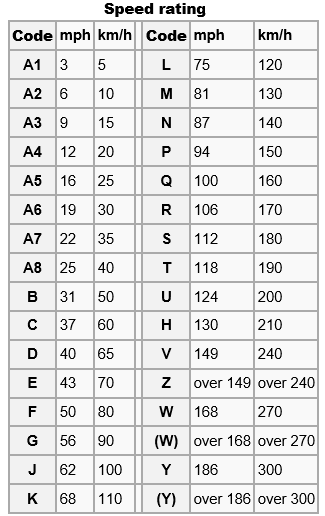




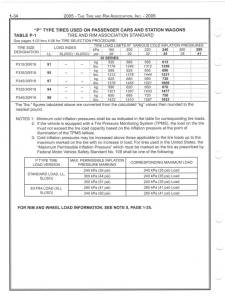



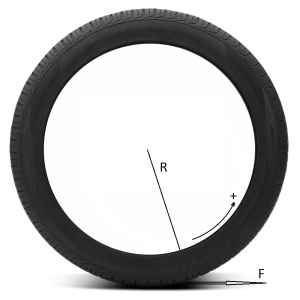


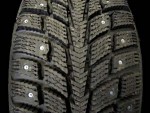
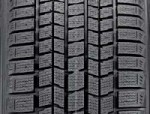


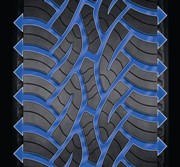
 Summer Tire
Summer Tire




